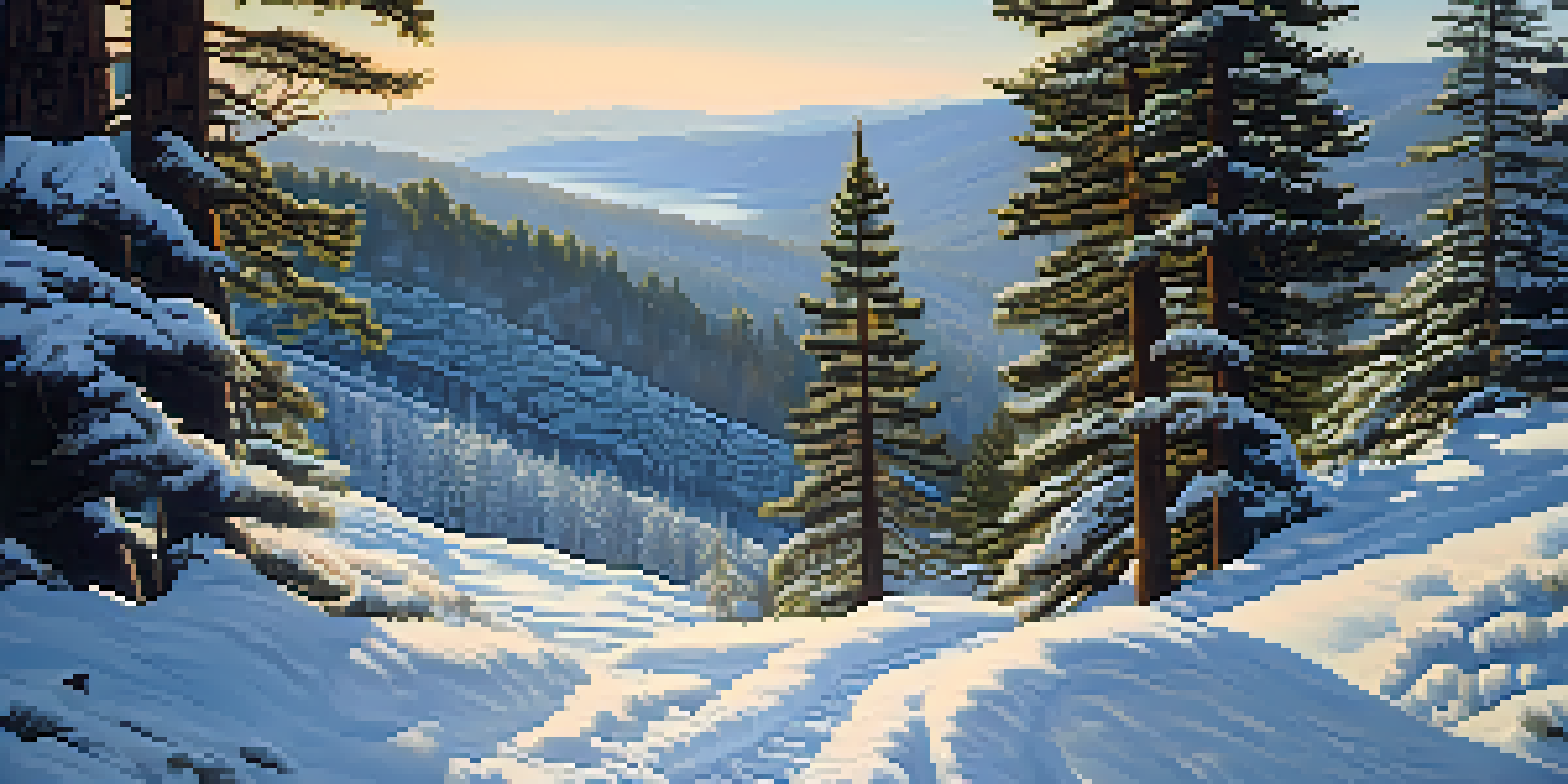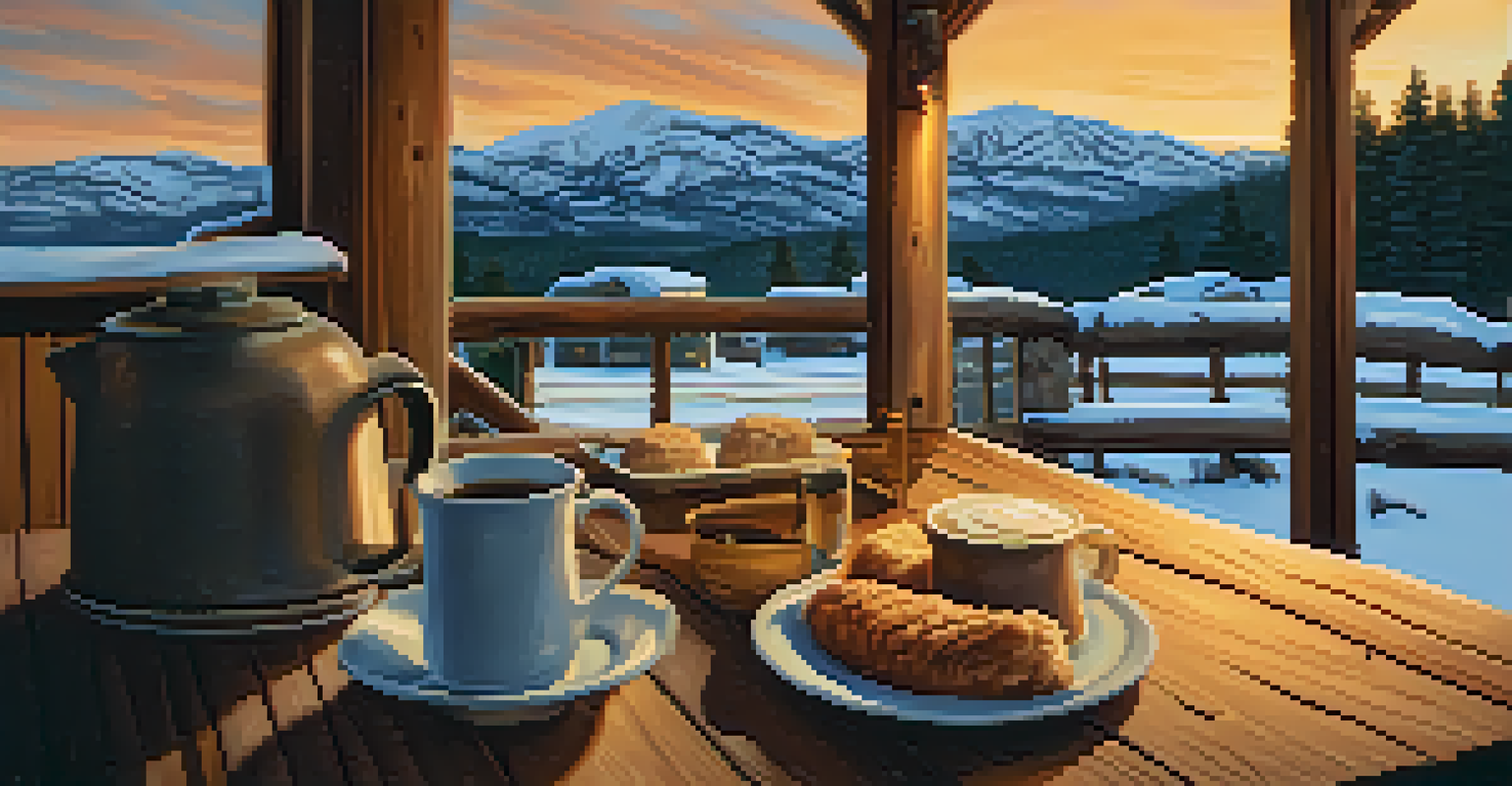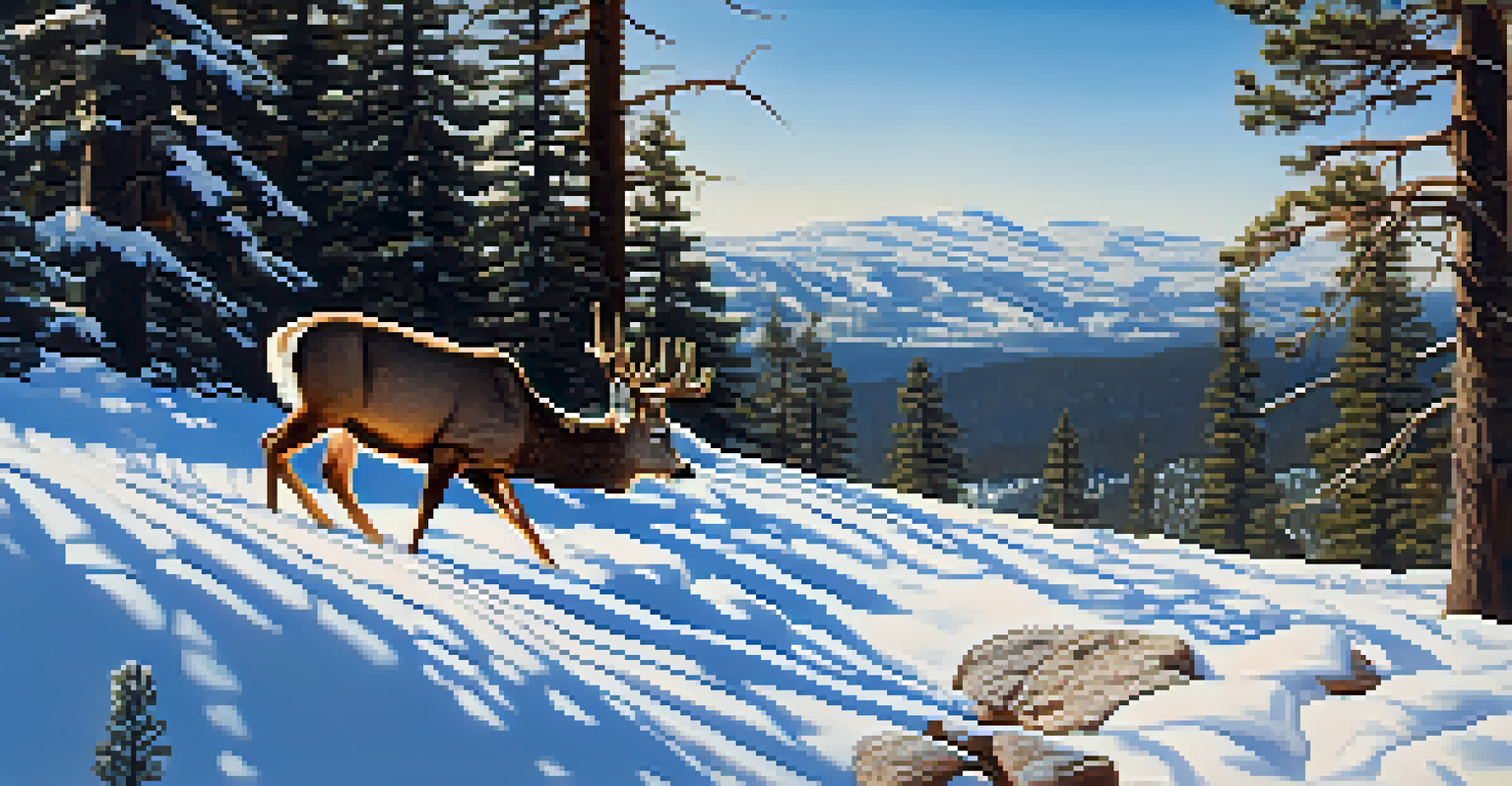Beginner's Guide to Winter Hiking in Big Bear Region

Why Winter Hiking in Big Bear is a Must-Do Adventure
Winter hiking in Big Bear offers a magical experience that showcases the beauty of snow-covered landscapes. The crisp air and serene environment create a unique backdrop for outdoor enthusiasts. Plus, the vibrant winter wildlife adds an extra layer of charm to your hike.
In every walk with nature one receives far more than he seeks.
Unlike the summer crowds, winter trails provide a peaceful escape where you can connect with nature without the hustle and bustle. Imagine walking through a quiet forest, with only the sound of crunching snow beneath your boots. It's a refreshing way to experience the great outdoors.
Whether you're a seasoned hiker or a beginner, the stunning views and tranquil atmosphere make Big Bear an ideal winter hiking destination. So, bundle up and get ready for an adventure that combines exercise, exploration, and the sheer joy of winter.
Essential Gear for Winter Hiking in Big Bear
Choosing the right gear is crucial for a successful winter hike. Start with insulated, waterproof boots to keep your feet warm and dry as you traverse snowy trails. Additionally, wearing layered clothing will help you regulate your body temperature, ensuring comfort throughout your hike.

Don't forget to pack essential items like trekking poles for stability on slippery terrains and a backpack filled with snacks and water. A good pair of gloves and a warm hat will also prevent heat loss, allowing you to enjoy your hike longer.
Winter Hiking Offers Unique Beauty
Exploring snow-covered trails in Big Bear provides a serene escape and a chance to connect with nature.
Lastly, consider bringing gear like gaiters to keep snow out of your boots, and microspikes for added grip on icy paths. Having the right equipment not only enhances your experience but also keeps you safe in winter conditions.
Choosing the Best Trails for Beginners
Big Bear boasts a variety of trails suitable for winter hiking, making it perfect for beginners. Start with the Alpine Pedal Path, a relatively flat and easy trail that offers stunning lake views without much elevation gain. This trail is great for families and those new to winter hiking.
The mountains are calling and I must go.
Another beginner-friendly option is the Pine Knot Trail. While it has some elevation, the well-marked path and beautiful scenery make it manageable for novice hikers. You'll also find plenty of spots to take breaks and enjoy the surrounding nature.
Always check trail conditions before you head out, as winter weather can affect accessibility. Websites and local ranger stations provide updates on snow levels and trail maintenance, ensuring you choose a safe and enjoyable route.
Understanding Weather Conditions Before Your Hike
Weather can change rapidly in winter, especially in mountainous areas like Big Bear. It's essential to check the forecast before you set out, as conditions can vary from sunny to snowy in just a few hours. Being prepared for unexpected weather helps ensure a safe hiking experience.
Pay attention to temperature drops and potential snowfall, as these factors can impact trail conditions. Dress accordingly and always have extra layers in your pack. Remember, it's better to be over-prepared than to find yourself cold and uncomfortable.
Essential Gear Enhances Safety
Wearing the right gear, including insulated boots and layered clothing, is crucial for a comfortable and safe winter hiking experience.
Lastly, always inform someone of your hiking plans and expected return time. This simple step can make a significant difference in case of an emergency, ensuring that someone knows where you are and when to expect you back.
Navigating Safety Tips for Winter Hiking
Safety is paramount when hiking in winter conditions. Always hike with a buddy or group, as there's safety in numbers. In case of an emergency, having someone with you can make a huge difference, from providing support to getting help.
Stay on marked trails to avoid getting lost or straying into hazardous areas. Snow can obscure familiar landmarks, making it easy to lose your way. Use a map or GPS device to guide you along the route.
Lastly, be mindful of your physical limits. Winter hiking can be more challenging than summer hikes due to snow and cold temperatures, so listen to your body and take breaks as needed. Staying aware of your surroundings and pacing yourself is key to a successful hike.
Wildlife Encounters in the Big Bear Region
Winter is a unique time to observe wildlife in the Big Bear area, as many animals adapt to the colder months. You might spot tracks in the snow left by deer, foxes, and even the occasional bear preparing for hibernation. Observing these signs can be a fun and educational part of your hike.
While wildlife encounters can be exciting, it's crucial to respect their space. Keep a safe distance and never attempt to feed or approach wild animals. Your safety and theirs depend on maintaining a healthy boundary.
Respect Wildlife and Nature
Observing wildlife tracks and maintaining a safe distance from animals enriches your hiking adventure while ensuring everyone's safety.
Consider bringing binoculars to spot birds and other creatures without disturbing them. With a little patience and respect for nature, winter hiking can provide unforgettable wildlife experiences.
Post-Hike Relaxation and Recovery in Big Bear
After a day of winter hiking, there's nothing quite like unwinding in Big Bear. Treat yourself to a warm meal at one of the local restaurants that offer hearty, comforting food perfect for refueling after your adventure. It's a great way to share stories and connect with fellow hikers.
Consider a soak in a hot tub or a cozy fireplace to relax those tired muscles. Many accommodations in the area offer amenities that cater to winter hikers, ensuring you recover comfortably and rejuvenate for your next day's adventure.

Lastly, take a moment to reflect on your hike. Whether it was a challenging trek or a leisurely stroll, each experience in nature adds to your love for the outdoors. Savor the memories, and start planning your next winter adventure!